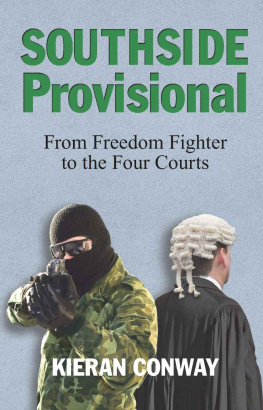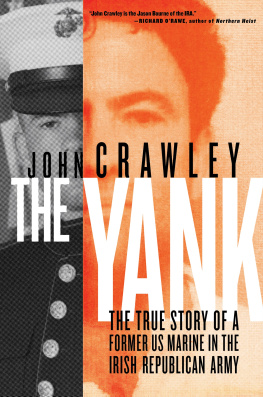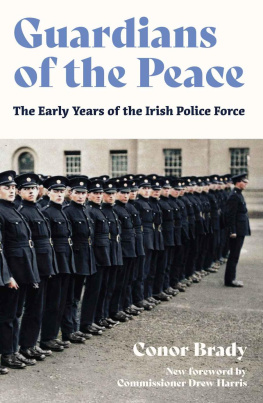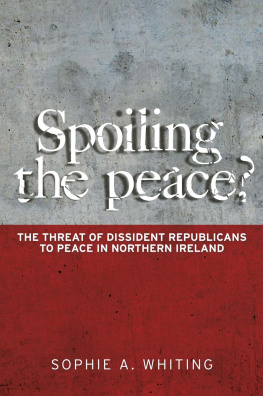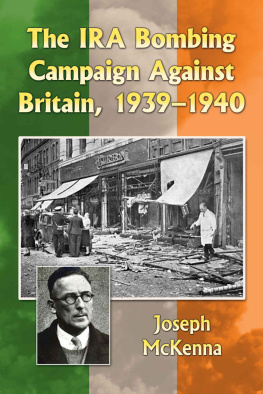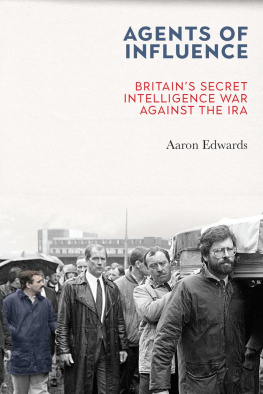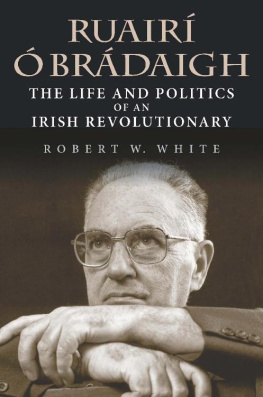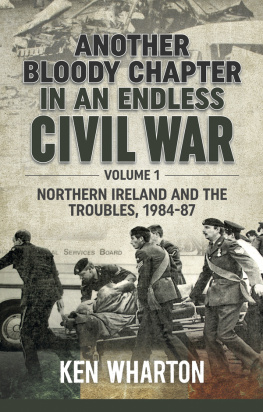A SECRET HISTORY
OF THE IRA
Second Edition
A SECRET HISTORY
OF THE IRA
Second Edition
Ed Moloney

PENGUIN BOOKS
PENGUIN BOOKS
Published by the Penguin Group
Penguin Books Ltd, 80 Strand, London WC2R 0RL, England
Penguin Group (USA) Inc., 375 Hudson Street, New York, New York 10014, USA
Penguin Group (Canada), 90 Eglinton Avenue East, Suite 700, Toronto, Ontario, Canada M4P 2Y3
(a division of Pearson Penguin Canada Inc.)
Penguin Ireland, 25 St Stephens Green, Dublin 2, Ireland
(a division of Penguin Books Ltd)
Penguin Group (Australia), 250 Camberwell Road, Camberwell, Victoria 3124, Australia
(a division of Pearson Australia Group Pty Ltd)
Penguin Books India Pvt Ltd, 11 Community Centre,
Panchsheel Park, New Delhi 110 017, India
Penguin Group (NZ), 67 Apollo Drive, Rosedale, North Shore 0632, New Zealand
(a division of Pearson New Zealand Ltd)
Penguin Books (South Africa) (Pty) Ltd, 24 Sturdee Avenue, Rosebank,
Johannesburg 2196, South Africa
Penguin Books Ltd, Registered Offices: 80 Strand, London WC2R 0RL, England
www.penguin.com
First published in the United States of America by W.W. Norton and Company Ltd 2002
First published in Great Britain by Allen Lane The Penguin Press 2002
Published in Penguin Books 2003
Second edition published in Penguin Books 2007
1
Copyright Ed Moloney, 2002, 2007
All rights reserved
The moral right of the author has been asserted.
Map on page 135 courtesy of Bob E. Hall, Center for Earth and Environmental Science, Indiana
UniversityPurdue University, Indianapolis. Maps on pages 36, 76, 94, 351 reprinted from
Provisional Irish Republicans by Robert W. White. Copyright 1993 by Robert W. White. Reproduced
with permission of Greenwood Publishing Group, Inc., Westport, Conn.
Except in the United States of America, this book is sold subject
to the condition that it shall not, by way of trade or otherwise, be lent,
re-sold, hired out, or otherwise circulated without the publishers
prior consent in any form of binding or cover other than that in
which it is published and without a similar condition including this
condition being imposed on the subsequent purchaser
EISBN: 9780141900698
This book is dedicated to
all the people who lost their lives
in the Northern Ireland Troubles.
CONTENTS
LIST OF MAPS
History, Stephen said, is a nightmare
from which I am trying to awake.
James Joyce, Ulysses
Preface to the second edition
It is to the enormous credit of Penguin Books and my editor there, Simon Winder, that I have been given the opportunity to update A Secret History of the IRA. The first edition ended just after the IRAs first act of decommissioning in the autumn of 2001, following the September 11 attacks in the United States and the arrest of IRA personnel in Colombia a month beforehand. This edition brings the story to what I would argue is the definitive end of the Provisional IRA as an instrument of armed and revolutionary resistance to British policy in Ireland. With that event, I believe, it is now also possible to say that the Troubles have ended.
The ending was signaled in two ways. First, by the IRA statement in July 2005 that formally announced that its armed struggle against Britain was over; and secondly by the completion of the decommissioning process the following September. Doubtless the IRA retained some weaponry to protect its leadership and key members against rivals and enemies but the destruction of its Libyan-supplied arsenal robbed the IRA of the capacity to wage war. Not only that but the act itself was replete with symbolic meaning, indicating a wish to eschew armed struggle in favour of political methods from thereon. The event was unprecedented in the history of Irelands struggle for independence.
This point came after five long and often turbulent years which saw the downfall of the Ulster Unionist leader, David Trimble, and his replacement as unionisms leader by his partys long-time loyalist critic and rival, Ian Paisley, leader of the Democratic Unionists and permanent Moderator of the Free Presbyterian Church. Nationalist politics were refashioned in an equally radical way with the IRAs political partner, Sinn Fein, replacing the SDLP as the dominant party and Gerry Adams displacing John Hume as nationalisms leader.
With that, the moderate center-ground of Northern Irish politicsin as much as it had ever existeddisappeared and potential executive power was transferred, as one acerbic critic put it, into the hands of a theocrat and an autocrat who might or might not agree to exercise it in the best interests of all the people of Northern Ireland.
That this state of affairs was brought about by the handling of IRA decommissioning is beyond dispute. It is a central thesis of the second edition of this book that the IRA could have decommissioned all its weapons much sooner, but chose instead to prevaricate and thereby to inject an even more virulent strain of sectarianism into Northern Irish politics. In such a way were Trimble and the SDLP destabilized and Sinn Fein catapulted to political and electoral success. It is surely no coincidence that once the process of destroying Trimble and sidelining the SDLP was completed, all the IRAs objections to final decommissioning suddenly vanished.
The plaudits that came the way of the British prime minister, Tony Blair, and his Irish counterpart, Bertie Ahern, in the wake of the IRA finally completing the decommissioning process are understandable. The two leaders had worked for years for this day to dawn, but any credit that they are due should, however, be balanced by the knowledge that it was they who facilitated this Sinn Fein strategy and it is they, ultimately, who bear responsibility for this triumph of the extremes in Northern Ireland.
At the time of writing, the DUP and Sinn Fein were still squabbling about the one issue remaining in the way of their sharing government: Sinn Feins acceptance of the policing and criminal justice system. It remains to be seen whether their differences, which concern the practicalities rather than the principle of the matter, can be overcome but of a number of things there can be little doubt. One is that the Provisional IRAs war is over for good. Another is that the politics of Northern Ireland have been changed forever and in a way no one could have predicted. Whether this will be for good or ill is a verdict only the passage of time can deliver, but the democratic record of Northern Irelands new potential political leadership gives little cause for optimism.
Penguins decision to publish the second edition of this book has enabled me to tell that tortuous if significant tale in two new chaptersNineteen and Twentyas well as in an Epilogue which takes the story up to the Assembly election of March 2007. I have also been able to correct some errors and compensate for some omissions in the first edition and add new information about the betrayal of the gun-running ship the Eksund and the attitudes of different Army Council members, including Gerry Adams and Martin McGuinness, towards it. Fresh information has come to light about Adamss IRA career after his release from Long Kesh in 1977 and that section of the first edition had been amended accordingly. The sad death of former Fianna Fail taoiseach Charles Haughey in June 2006 also releases me from the pledge of confidentiality I gave him while researching the first edition. Haughey played a crucial and often undervalued part in the genesis and evolution of the peace process and I believe that without him the birth of the peace process would have been much more difficult. At this point I should put on record that Haughey, who was in the early stages of the illness that claimed his life when we first spoke, did not search me out but rather was a reluctant and often grudging source. The stage, he once grumbled in the face of my persistence, is already overcrowded with people attempting to claim credit. It was I who deduced that he had played such an important role and it was I who sought him out. Only after numerous and lengthy visits to Kinsealy was I able to persuade him to tell his part in the story. I am now very happy to be able to acknowledge all this.
Next page

